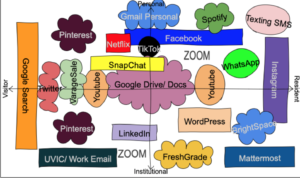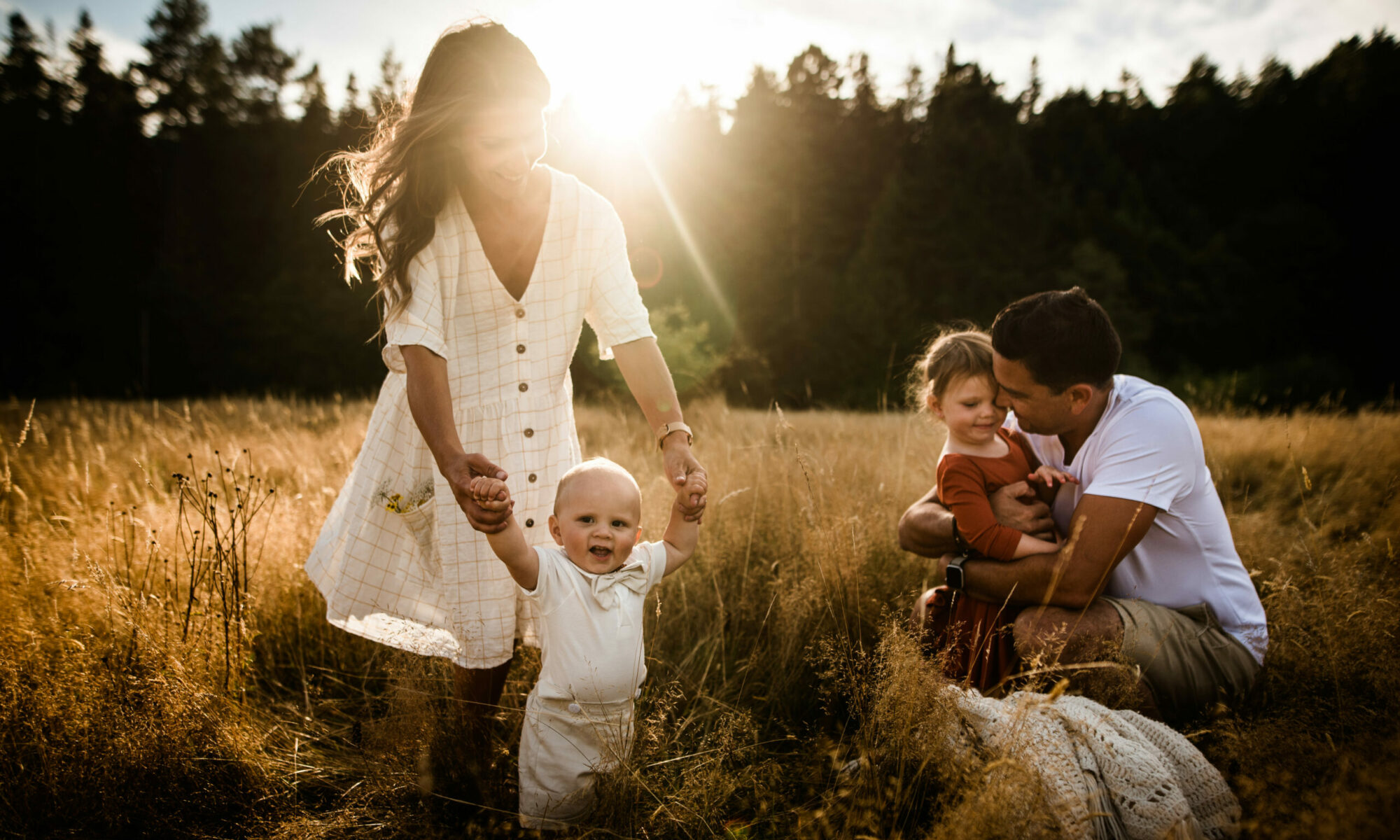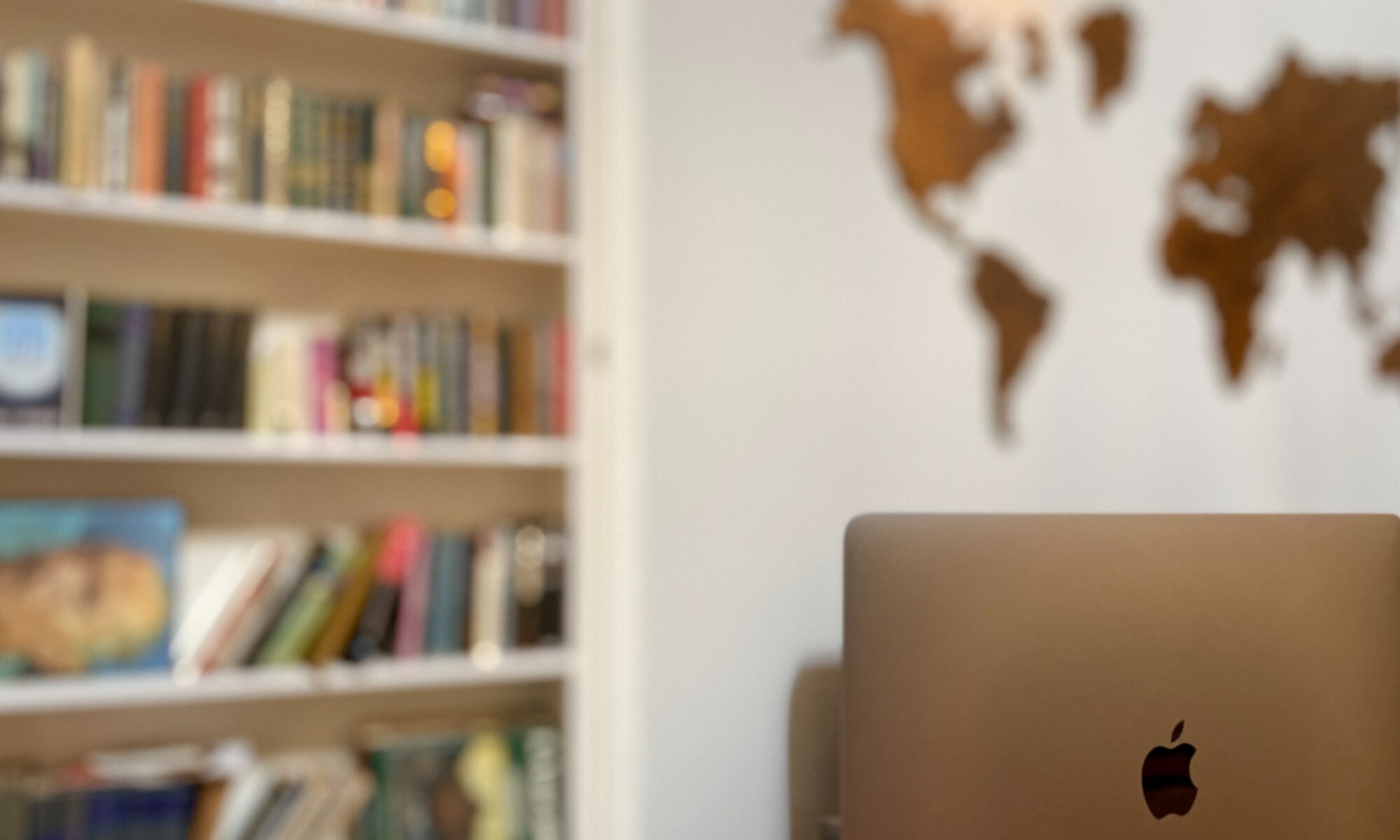
Students all over the globe are reaching out to be found by potential employers, coaches, collaborators, etc.. and they are using several online tools to do so. Students are currently using networks such as LinkedIn, blogs, forum chats, and webpages to develop their professional networks. That being said, I also know several educators and companies which are using Instagram to post and create a professional network. When I began noticing what students were using to build their networks, I started looking at mine.
After evaluating my own V&R map, I became aware of some of the things I could consider doing in order to expand my PLN. I could separate how I use my Instagram in order to expand my PLN. For example, my personal Instagram, which is riddled with my kids and my family which is currently intertwined with my teaching projects, could be broken up into a personal more private account and a professional teaching account. This way I can keep my personal separate from professional (as mush as possible with tight settings). Doing so would allow like-minded professionals a lens into my classroom and a chance to reach out, rather than seeing images of my kids and become disinterested as it doesn’t mirror their interests. The same would go for the caregivers of my students. A professional Instagram could give them some insight into my practices and pedagogy, thus allowing them to see the type of teacher I am. Another thing I can do to increase my professional learning network would be to use the website created in this course to attach my professional Instagram page to so that I can be found in different platforms all in one place. This way, I can send out a newsletter with my website attached and then caregivers and other professionals can search me from that location with the information I provide, rather than any information they get while googling me. Finally, I feel it would be important to implement platforms that other educators, my students and their caregivers are using. For example, other educators use Google Classroom, MS Teams as well as Instagram. Parents are using FreshGrade, which I currently use, as well as Instagram. Perhaps, I could somehow build this into my website with links so I can inform, engage, inspire and nurture education for all in one place. As Wikipedia points out, “participants in all of the educational stages frequently mentioned convenience/ease of use as an important factor in obtaining information” (Wikipedia, 2020), therefore perhaps making all my links convenient can make it easier for all users of my website to find what they need to support their learning which, in turn, helps me.
No matter how I choose to network, it is incredibly important to create a digital image of myself that is respectable. I need to remember that I am putting myself on the web to either tell something about myself or to attract potential employers, coaches, collaborators etc… Therefore, when I am acting in social networks, it is vital to do so with thought, care and attention to the fact that my comment has both positive and negative impacts to myself and possibly others, all which can all be traced back to me. In other words, I need to stop and think “Why am I sharing?” and “How will what I post demonstrate the kind of person I am?”
For example, If I am choosing to share something I find funny, I need to ask myself, “Will it be funny to all?” Will it discriminate? Will it hurt feelings? Will it be taken out of context? What would a potential employer think of this? If I can justify those questions, I might think about posting it. However, if those answers cannot be justified, I will absolutely not post.
Not only should I consider what I post, I should acknowledge the importance of how I post on other people’s posts or comments. I must think about the direct link that a potential person has to my comment and what my comment shows about the type of person I am. When I post or comment, I always act how I do when I am speaking to someone in person, or even maybe a little bit better as there is a paper trail. I am supportive of what I believe and kind in how I treat and speak to others. I may have a differing opinion, however, I continue to be kind and thoughtful. The reason I believe it is important to watch how I say things or what I say in comments comes from experience when I welcomed an adult volunteer into our class. They seemed absolutely lovely. A colleague of mine came in and mentioned to be weary of sharing too much to this person as they have a habit of “being kind to your face and ripping you apart on social media.” I was taken back. I asked how she knew this and then she showed me the mom’s group chat comments of facebook written by this volunteer. I was now terrified to have this volunteer back as I didn’t know what could possibly be posted about myself or the learners in our classroom. I never asked this person back because their posts gave me insight into how they behave online, which changed my mind about them in person. They seemed sweet, but showed a different side online. This volunteer hindered their own opportunity by posting unkind remarks online. I have since made a written contract that any volunteer in our room must sign which mentions how they must keep anything they see to themselves or actions could be taken. The contract mentions both online and offline comments. I hope it helps people think before they write or talk.
On the other side of this, when I created my V&R map, I noticed how it isn’t always about how a person can damage their image to an employer. They can also enhance their opportunity by participating in more networks. Currently, I tend to “lurk” in a few platforms but have not yet shared my thinking. Take Twitter for example. I follow people and the news on twitter, but I have yet to post. When I stop to think about why, it stems from my fear of backlash from an employer or caregiver, as well as the potential to post something out of context. However, if I actually participated in this realm and became more of a resident, my ability to be noticed would increase substantially. Tweeting is a quick and efficient way to get what you are doing out in the world within seconds. There are so many users and potential collaborators which use this platform, so when I want the chance to be noticed it would be important to participate on the Twitter platform. I would just have to remember the reasons WHY I am posting and HOW what I choose to post can make me look to ALL potential readers.
If a future employer were to search my name, they would not come up with much. I do use several “alias” names for different accounts which are managed quite securely. They would likely come up with my running times, marathon photos and my outdated LinkedIn account. The running and marathon will absolutely be fine to see by an employer as it may show them I am determined, athletic and work towards my goals. However, my LinkedIn is outdated and I should either cancel it, or update it so that potential employers do not have outdated information regarding my current credentials.
One question I still have is, in regards to the quality of my overall digital identity (both personal and professional). After participating in the V&R activity and readings and really taking a look at how I use platforms, I wonder if I should separate my ID’s into two separate networks- a professional and a super secure private personal, or should I somehow meld the two. I would love to hear your thoughts on this.
Citation:
Wikipedia contributors. “Digital Visitor and Resident.” Wikipedia, 31 Dec. 2020, en.wikipedia.org/wiki/Digital_Visitor_and_Resident
“V&R Mapping.” David White, 13 Jan. 2020, daveowhite.com/vandr/vr-mapping/.


Hi Jayne!
I think it would be a great idea to create another Instagram account for professional purposes.
That way you will also be able to keep your personal and professional learning networks separate.
I follow some potential employers on my Instagram and I find that I tend to become a bit overwhelmed with all of the content they are producing. My newsfeed as a result is this strange mix of public health-related content and the content that my friends and family are producing. Instagram doesn’t feel like a leisure activity anymore when my newsfeed is full of career-related information.
I also tend to ‘lurk’ out of fear of judgment on some of my own thinking. I have personally heard of so many horror stories of tweets and photos being unearthed from 2008 that have had serious effects on people’s careers. I feel like part of the reason for this is because at that time most of the world was still trying to figure out digital etiquette. I remember when creating statuses and ‘liking’ as many pages as you could, were popular things to do on Facebook. I was guilty of both for the sake of wanting to fit in and when I look back at that content now, I am extremely embarrassed at the things I thought were amusing in middle school. Needless to say, I have deleted most of that content, although I’m sure somewhere out there it still remains?
To become more comfortable with putting myself out there and to build my PLN I have been wanting to join Toastmasters (https://www.toastmasters.org/) for a very long time! Not sure if it would be of interest to you as well since I am sure that being a teacher, you are great at presenting!
HI rachellevanr,
Thank you for taking the time to read my blog and to respond to my question. Toast Masters is an incredible course and honestly improves your public speaking immensely. It is something I have always been interested in. My husband and a few of our friends have taken it and I must say that their ability to speak eloquently, precisely and without any “ummm, likes” is fantastic. I have taken improvisation classes and I do find that they helped with my speaking as well (but that was more for my ability to think on my feet and to learn more in order to use it in my classroom).
At the end of the day, I think if we learn the “etiquette” as you mentioned and if we think about why we are sharing and how we are sharing, it will be okay to come out of the depths and stop “lurking” and start participating in a productive and knowledgeable way.
Hi Jayne
I sent you a message on our group chat but I thought you would be interested to hear what the Co-op department at UVic says in regards to your questions about whether or not you should separate your ID’s into two separate networks- a professional and a super secure private personal, or should you somehow meld the two. The department says to use LinkedIn for your professional presence, Facebook for personal use and a blended personal/professional Twitter.
Hi Calli McMillan,
Thank you for your insight! What wonderful information to share. I appreciate the new knowledge.
Hi Jayne. I couldn’t agree more with you about the necessity of building a respectful digital image as both employee and employer. The digital image became such an important measurement in job posting and application nowadays.
Thank you for your comment yiwei!
Hi Jayne,
I really like your idea of separating your Instagram and have a personal and professional Instagram account. I have seen many people do this, having a personal account to share about their family and life highlights and a professional platform to share your teaching content. And on Instagram, they have a business account option as well, and you can see how your account is growing, who you are reaching out to and what your demographics are. To help guide you to grow your PLN.